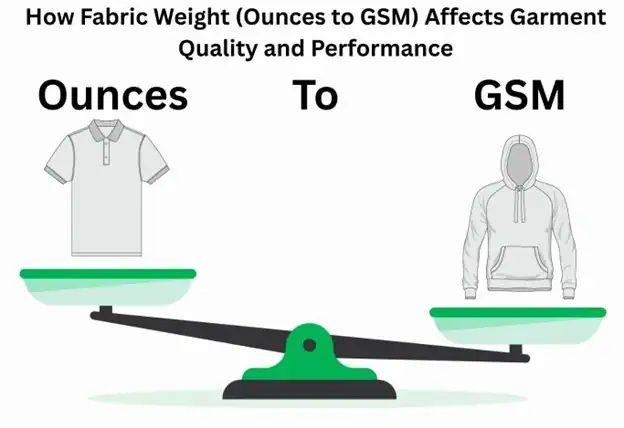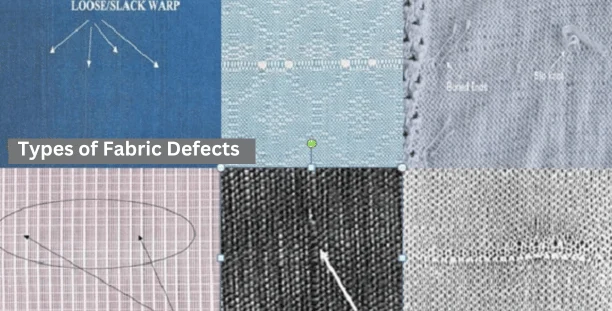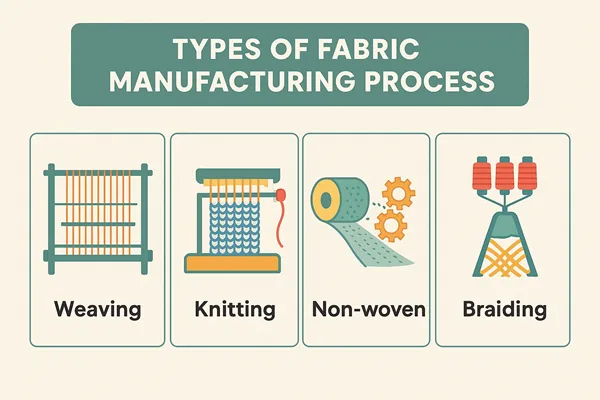Different Types of Fabric for Dresses and Clothing
Fabrics constitute a diverse and essential element of design; comprehending the various varieties and their applications will enable us to make informed choices and craft enduring ensembles that are both comfortable and fashionable. This article is all about the Different Types of Fabric for Dresses and Clothing.
Typically, fabrics are named after the fiber utilized in their production. Like, fabrics composed entirely of cotton fibers are referred to as cotton fabric. Certain textiles, whether made entirely of one fiber or a blend of fibers, may have multiple names based on weaving patterns, production process, fabric texture, etc. In order to be distinguished from one another, each fabric has a distinctive name that is based on its textures, designs, weaving patterns, aesthetic qualities, fiber source, origin, etc. Like cotton fabric has different varieties such as voile, lawn, organdy, cotton poplin, cotton twill, etc. Let’s get details on the Different Types of Fabric for Dresses and Clothing.
If fabric is the basis of fashion, fabric types in clothing determine its appearance. Comfort, durability, and functionality are other concepts dependent on fabric and its types. Thousands of fabrics are available in the market to satisfy the users. Our textile manufacturing industry is trying to satisfy those apparel manufacturers by producing different fabric types in weaving or knitting factories. Here is a list of some popular Different Types of Fabric for Dresses and Clothing, which are presented here with their images and uses.
In the fashion industry, fabric is the main raw material required to manufacture Dresses and Clothing. Clothing is available in various types; hence, various types of fabrics are also required in the apparel manufacturing industry to meet the requirements of apparel manufacturers. As its importance, this article has presented different types of fabric names with their uses and individual images for Dresses and Clothing.
What are the Different Types of Fabric for Dresses and Clothing?
Here in this article, we will discuss different types of fabrics that are commonly used for clothing and dresses:
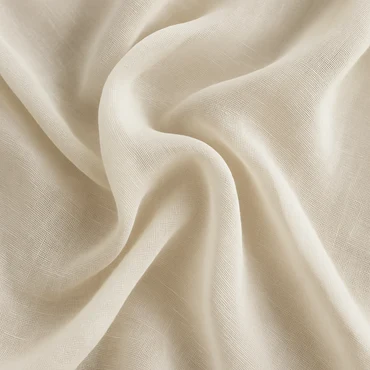
1. Voile Fabric:
Voile, which is made of fine cotton, is extraordinarily soft against the skin and provides both comfort and style. It is an exceptional option for warm weather due to the feather-light feel of cotton voile fabric. It is popular for creating delicate summer clothing and chic accents for home decor because of its lightweight, semi-sheer texture and silky drape. It is frequently used to create lingerie, dresses, nightgowns, curtains, and women’s blouses.

2. Lawn Cloth
Lawn describes woven (plain weave) fabric that was formerly made of flax or linen but is now made of cotton. Unlike voile, it is also made of fine, high-count cotton yarn, but it is crisp, smooth, and silky. It works well with loose, unstructured clothing where the fabric will be subjected to less stress. It is used for aprons, dresses, handkerchiefs, and baby clothes.
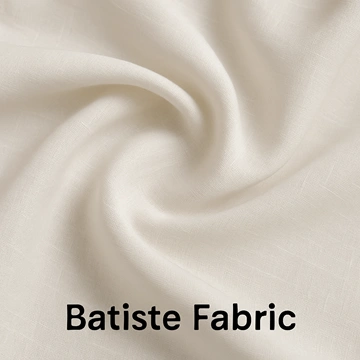
3. Batiste Fabric:
The term “batiste” most frequently describes a lightweight, plain-weave fabric composed of mercerized cotton. The fabric’s surface is given a glossy effect via the mercerization process. This fabric is commonly used for sundresses, skirts, nightwear clothing like pajamas, bedding like duvet covers, handkerchiefs, etc.
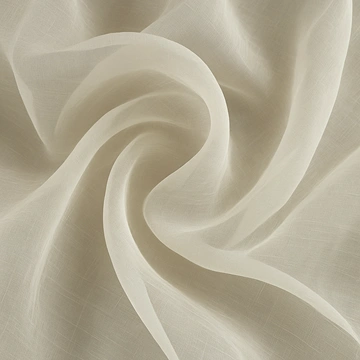
4. Organdy Fabric:
Organdy is a stiff, semi-transparent, delicate, and lightweight fabric that is composed of cotton. It has a stiff and crisp hand feel, which is frequently attained with a starch finish. It is a plain-weave cotton fabric that wrinkles readily and resembles batiste and lawn cloth. Organdy originated in Switzerland and is often known as Swiss organdy. It is typically used in summer dresses, blouses, skirts, puffy sleeves of dresses, waistcoats, gowns, collars, cuffs, and aprons, etc.
5. Viscose Fabric
Viscose, a semi-synthetic rayon fabric derived from wood pulp, is used as a silk substitute because it feels silky and drapes similarly to the high-end fabric. A fantastic choice for a lightweight cloth with a pleasant drape, a glossy finish, and a soft feel is viscose. It is reasonably priced and can communicate luxury at a far reduced cost. It also mixes nicely with spandex, polyester, and cotton, among other fabrics. It is lightweight, breathable, absorbent and suitable for T-shirts, dresses, blouses, athletic wear, lingerie etc.
6. Khadi Fabric:
Khadi is a traditional handwoven and hand-spun fabric. Cotton and other natural fibers are commonly used to make it. Using a spinning wheel called a charkha, the fibers are manually spun into yarn to create Khadi, which is subsequently woven into cloth on a handloom. The fabric has distinctive textures and patterns as a result of this time and labor consuming process.
Generally cotton khadi and silk khadi or endi silk is popular. This fabric is comfortable, affordable and ethnic in appearance. In Bangladesh, Comilla khadi is used in Panjabi, lungi, women’s dresses etc.
7. Gingham:
Gingham is a type of cotton fabric, or occasionally a cotton blend fabric, that is created by weaving plainly dyed yarn into a checked design. The term “Gingham” comes from the Malay word “Genggang,” means “striped,” and refers to fabrics having check patterns. Most popular gingham patterns are red-white, blue-white, pink-white checkered. It is a popular cloth since it is inexpensive and easy to produce. Gingham is commonly used for ladies shirts, kid’s dresses, bedsheets and tablecloths etc.
8. Madras Fabric:
Madras is a lightweight, checkered, striped, or plaid cotton fabric that is hand-woven. Madras cloth originated in the Madras region of India. Only textiles from this area of India can be referred to as madras fabric. The cotton yarns are traditionally dyed with vegetable dyes by using local spring water. Depending on the mineral content in water the obtained shade is different each time. Madras cloth is synonymous with men’s, women’s, and children’s plaid patchwork pants or shorts, shirts and dresses. It’s a classic cotton summer garment.
9. Muslin:
A cotton fabric with a simple weave, muslin is renowned for being light and airy. Usually composed of either bleached or unbleached cotton fibers, it produces a very soft and cozy fabric. Historically, muslin was woven by hand using unusually fragile hand-spun yarn that involves 16 step process. Dhaka muslin was very popular in late 18th century in Europe due to their sheer elegance and delicacy as they could pulled through a ring. But they vanishes in 20th century during the British reign. However, muslin fabric is quite adaptable and works well for many different purposes. It can be used as a backdrop for photos as well as for clothing, curtains, crafts, and home decor. The soft, delicate texture of muslin fabric is comforting to the skin. This feature makes it perfect for baby products like swaddles and blankets. It is also used for making dresses, blouses, summer clothing, lining etc.
10. Jersey Fabric:
The single-knit cotton fabric known as jersey is renowned for its softness and elasticity. Without the introduction of stretch fibers like elastane, jersey has a natural elasticity due to the way it is knit. Jersey knit fabrics include prominent horizontal ribs on the back and flat vertical lines on the front. Despite its completely opaque, close-knit texture, jersey is incredibly breathable and absorbent. Jersey fabric is mostly used in T-shirts, evening wear, kids wear, hijabs etc.
11. Oxford Fabric:
Oxford fabrics are created from soft, fine yarn using loosely built weaves like half basket, basket, and rib weaves. The cloth is permeable because basket weave is a loosely structured weave. This fabric is lustrous and mainly made of cotton fiber. This soft cotton fabric, named after Oxford University, is most commonly used to create the traditional white oxford shirt. But it’s also present in sportswear, pajamas, and skirts. For button-down collars and other casual shirt styles, plain and pinpoint oxford are frequently utilized. Compared to ordinary Oxford, pinpoint Oxford is constructed from finer yarn and has a tighter weave. It displays a textural “pin” or “dot” effect.
12. Poplin Fabric:
Poplin is a cotton plain weave fabric with extremely thin horizontal ribs that give it a smooth, glossy surface and strength. It features both coarser weft yarn and very fine warp yarn. Pure cotton, synthetic cotton, or even a mixture of several different materials can be used to make poplin. It is a multipurpose fabric with a light sheen that gives any apparel both beauty and drape. It is a lightweight, simple yet strong fabric that is perfect for clothing like men’s and women’s shirt, ladies dresses, pants, skirts as well as home decor items.
13. Chambray Fabric:
Chambray is another lightweight and smooth yet dense woven fabric. Initially, it was made from linen, but now the term chambray is solely used to refer to cotton fabrics made with the precise weft and weave pattern. In addition to being a popular fabric for many home textiles, some consumers may decide to choose chambray instead of denim. It is used for festive clothing, shirts, shorts, skirts, light jackets, upholstery for sofas and bedsheets etc.
14. Linen Fabric:
The flax plant is used to make linen, a lightweight, incredibly durable fabric. Because it is lightweight and very breathable, the fabric is perfect for summer apparel because it lets air flow through and regulates body temperature. This fabric wrinkles easily but it is three times stronger than cotton. Linen is a typical material used for clothing like shirts, skirts, towels, tablecloths, napkins, and bedsheets, inner layer of jackets, curtains, rugs etc.
15. Plaid Fabric:
The term “plaid” refers to a checkered ornament made up of twill-woven multicolored dyed threads. It is made up of vertical and horizontal stripes of various widths and colors. This fabric pattern is always been popular, from Celtic tribes to fashion runways, and its significance and diversity have only grown with time. This fabric is always in style. Tartan, Burberry, glencheck, vichy, chicken foot, papita, etc. are some of the varieties of plaid fabric. This timeless fabric is available for all markets, including men’s shirt, women’s dresses, kidswear, and home furnishings, and they are always in style.
16. Cotton broadcloth:
Broadcloth is a medium-weight fabric with an unbalanced plain weave and fine ribbed texture. It is fairly densely woven, which gives to its unique luster and smooth appearance. Broadcloth was originally made of wool in England, but it is now mainly composed of cotton or cotton-blend fibers. The fabric is mercerized to give sheen, better dye absorption and reduced shrinkage. It is used in shirts, blouses, skirts, bags etc.
17. Chino Fabric:
Chino is a long-lasting cotton fabric with a steep twill weave and popular for making pants called “Chinos”. The fabric is mercerized to add shine and luster. It is a well-liked option for casual attire because of its reputation for adaptability, ease, and longevity. It is among the few types of fabric that can endure the demanding requirements and demands of military attire. Besides mercerization, anti-wrinkle finishing is given to this fabric to provide a polished appearance.
18. Gabardine Fabric:
The thick, twill-woven fabric known as gabardine has a smooth surface on one side and a diagonal rib on the other. The fabric comes in a variety of surface patterns, including plaid, checks, stripes, heather, and solid colors. Fabrics made of gabardine are renowned for their special fusion of softness, strength, and style. The compactness of fabric provides dirt resistance. It is used for making pants, suits, blazer, outer wear like trench coats, uniforms, curtains etc.
19. Canvas Fabric:
Canvas is usually comprised of strong cotton yarn and is a plain-weave fabric. Canvas cloth is renowned for being strong, resilient, and long-lasting. Canvas can be made waterproof or water resistant by combining cotton and synthetic fibers, which makes it an excellent cloth for outdoor use. It is frequently used in tents, boat sails, sneakers, bags, duck fabrics, belts, motor hoods, painting canvases etc.
20. Khaki fabric:
In the fashion business, khaki is a popular and adaptable textile that is especially utilized to make casual apparel. It is a sturdy cloth with a twill weave and a distinctive khaki color—a pale, sandy beige. Khaki is usually made from cotton or a cotton-polyester blend. Cotton khaki is quite popular since it is soft, breathable, and absorbs moisture well. This fabric has exceptional strength and durability due to its twill weaving pattern. It is frequently utilized in the manufacturing of clothing items such as shirts, skirts, jackets, shorts, and pants. Khaki is also a great choice for using in military uniforms.
21. Drill Fabric
Drill is a sturdy cotton fabric with a diagonal twill weave. This fabric is prone to wrinkles, but it is frequently treated with anti-wrinkle finish, which makes it suitable for use. It is most frequently used in khaki bottoms, chef coats, work-wear, safari jackets, uniform, tents etc.
22. Denim Fabric
Denim is a strong and durable twilled cotton fabric with diagonal ribbing and a blue-dyed warp (lengthwise threads) and white weft (crosswise threads). Originally made entirely of cotton, denim is now combined with polyester to prevent shrinkage and wrinkles and lycra to give it more elasticity. Denim can be stonewashed, brushed, napped, striped, and printed. There are different types of denim fabric like raw denim, sanforised denim, stretched denim, crushed denim, selvedge denim, acid wash denim, poly denim etc. Denim is a popular fabric among young generation and used for making blue jeans, jackets, shorts, skirts, vests and accessories like belts, shoes, purses, hats etc.
23. Corduroy Fabric:
A fabric with vertical rows of soft pile that are uniformly spaced is called corduroy. The arrangement of these rows is known as a “cord” or “wale”. Three distinct strands are woven together to create corduroy. The third yarn intersperses into the plain or twill weave created by the first two major yarns in the filling direction, creating floats that cross at least four warp yarns. To prevent the pile yarn from pulling through when cutting, glue is placed to the back of the fabric. Manufacturers remove this adhesive during production process.
Although cotton is typically used to make corduroy, it can also be woven using polyester-cotton blends or even 100% polyester. Corduroy can be used for jackets, dresses, shirts, pants, and upholstery, depending on the fabric’s weight. In cold weather, it is a particularly popular fabric for garments. Corduroy is durable enough to be used for coats and dress pants. Even spring and summer clothing can be made by using lightweight feathercords and pincords.
24. Moleskin Fabric:
Moleskin is a sumptuous, velvety, and dense cotton fabric with a distinctive brushed surface that is similar to the texture of an animal’s mole fur. This flexible textile is made by weaving a thick cotton twill fabric and then exposing it to a specialized shearing procedure to remove the top layer of fibers. Following shearing, the cloth is delicately brushed to elevate the residual strands and create its distinctive velvety texture. Moleskin is well-known for its exceptional insulating properties, which allow the wearer to be warm and comfortable. The fabric is also extremely strong and have abrasion resistance, making it ideal for work wear and rough outdoor activities. This fabric is ideal for making shirts, coats, dresses, pants, trousers etc.
25. Satin Fabric:
Along with twill and plain weave, satin is one of the three main types of textiles. The satin weave produces a fabric with a lovely drape that is elastic, silky, and lustrous. A silky, glossy sheen on one side and a duller surface on the other are characteristics of satin cloth. The satin fabric’s sheen adds a sophisticated touch to the material. Furthermore, this fabric comes in a wide range of colors, including blue, purple, red, green, and black. It is typically made of rayon or silk, which accounts for its smoothness. Additionally, satin is extremely delicate and light, and it is made with a lot of care and attention. Numerous garments, including blouses, underwear, dresses, and many more, are made of satin fabric. Curtains, bed linens, and decorative items are all made of satin fabric.
26. Silk Fabric:
Silk, an elegant natural fiber produces from silk worm known for its softness and sheen. It is lightweight and slippery yet sturdy and strong material with a lovely drape and luster. Silk is utilized in a variety of applications, including formal wear, shares, women’s dresses accessories, bedding and upholstery, curtains etc.
27. Georgette Fabric:
Georgette is a very flowing, sheer, translucent fabric with good structure and drape. Because the yarns used in the weave are tightly twisted, georgette is renowned for its distinctive puckered appearance. It is made with synthetic fiber mostly. Used in ladies dresses, kurta, sharees, home décor items etc.
28. Crepe Fabric:
Crepe fabric is known for its distinctive crinkly appearance. Using high-twist yarns during the manufacturing process gives the cloth its unique feel. In order to improve and solidify the texture, these yarns may be subjected to a variety of finishing techniques. A variety of fibers, including as silk, cotton, wool, and polyester, can be used to make crepe, which affects how it feels, looks, and lasts. Fashion designers love crepe for its distinct texture and drape. While bulkier wool crepes are best suited for fall and winter, lightweight crepes are suitable for spring and summer. It is used for making dresses, blouses, scarves, curtains, pelmet covers etc.
29. Chiffon Fabric:
Chiffon fabric seems sheer and transparent, resembling a fine net or mesh when viewed under a magnifying glass. The alternating s-twist and z-twist yarns in chiffon causes tiny puckers that gives the fabric a rough texture. The fabric is strong, durable, shimmery and slightly stretchable. The fabric can be made from cotton, polyester, nylon and silk fiber. It is used for making evening gowns, dresses, scarves, blouses, shirts, undergarments and upholstery purposes.
30. Taffeta Fabric:
Taffeta is a lightweight, crisp fabric that is frequently used to create a wide range of upscale women’s clothing items. A wide range of materials like polyester, silk, nylon, acetate etc. can be used to create this plain woven fabric, which feels smooth to the touch. Taffeta cloth usually looks bright and lustrous. Depending on the fabric type and weave tightness, taffeta can range from light to medium weight and in sheerness. It is used in wedding dresses, party costumes, evening wear, lining fabric in jackets and also in home decor items.
31. Organza fabric:
Originally made of silk, organza is a sheer, airy fabric with a plain weave. Synthetic fibers, mainly polyester and nylon, can also be used to make the material. Because of the tiny holes created by the weave, organza is a translucent textile that allows for visibility. The fabric’s quality increases with the number of holes per inch. The threads are twisted tightly before weaving in order to create transparency, which results in an incredibly thin fabric. The fabric is airy, breathable and prone to fraying. Organza is quite popular for evening wear and wedding dresses because of its translucent and shimmering properties, which provide opulent silhouettes.
32. Lace Fabric:
Lace is a decorative and delicate web-like fabric produced by different techniques like warp knitting or embroidery etc. Usually lace fabric is constructed from silk, linen, nylon, polyester and even cotton fiber. Because it requires a great deal of skill and time to manufacture, lace is typically regarded as a premium cloth. It is used to decorate garments, in sharees, wedding gowns, lingerie, home furnishing like table cloth, curtains, cushion covers, lampshades etc.
33. Velvet fabric:
The fabric known as velvet has a short, dense, and soft pile and is tightly woven. A rich pile of uniformly cut fibers with a smooth nap is what makes velvet a velvety, opulent fabric. Because of the properties of the short pile fibers, velvet has a lovely drape and a very soft and glossy appearance. Originally comprised of silk, velvet is a popular fabric for evening wear and special occasion outfits. Velvet can also be made from cotton, linen, wool, mohair, and synthetic fibers, which lowers its cost. Depending on the fabric’s construction and fiber type, there are several types of velvet. Like crushed velvet, panned and embossed velvet, stretch velvet (with spandex added), and patterned velvet—where the piles are cut to different lengths etc. Velvet is the epitome of luxury thus is used in gowns, party dresses, coats, suits, hats etc. It is also breathable and warm fabric. Additionally, it wicks away moisture well, which makes it an excellent fabric for bath robes and towels. It is also a common element in home decor, appearing in cushions, curtains, upholstery fabric, and other items.
34. Wool Fabric
A type of fabric called wool is made from the hairs of different animals. Wool is produced by harvesting animal hairs and spinning them into yarn. This yarn is used to create clothing and other materials. Wool has a characteristic waviness known as “crimp” when it is woven into textiles. Because wool’s bulkiness naturally retains air, this crimp adds to the material’s insulating qualities. Wool is used in formal suits, sweaters, hats, gloves, socks and other winter clothing.
35. Cashmere Fabric:
Cashmere is a kind of wool that is produced from the hair of a particular kind of goat that is indigenous to Central Asia and the Gobi Desert. Since cashmere wool is softer and finer than other kinds of wool, it is much more costly and instantly gives the wearer a feeling of luxury and relaxation. It is coveted for its use in sweaters, intricate dresses, formal wear, scarves, and other lightweight winter clothing.
36. Fleece Fabric:
One kind of weft insertion jersey is fleece. Weft knit fabrics that have an extra yarn inserted for every course are known as weft insertion fabrics. These extra yarns are retained in place by the loops in each course of the fabric rather than being knit. Typically, the foundation yarn is softer than the insertion yarn. When the insertion yarn is sheared and napped it creates soft, fuzzy fabric called fleece. Mostly polyester is used in fleece fabric. Because of its fuzzy texture and thick fabric composition, fleece is ideal for cold climates. Fleece is used in the lining of leggings, gloves, caps, scarves, earmuffs, jackets, pullovers, and hoodies, blankets, coats, and boots etc.
37. Flannel Fabric:
Flannel is a medium-weight, silky cotton fabric with one or both sides napped and fuzzy. It can be plain or twill woven fabric and provides warmness and softness which is achieved by double brushing technique. Originally constructed of wool, flannel can today be manufactured of cotton, wool, or synthetic fibers. These days, 100% cotton flannel is the softest and coziest. It is a cold weather fabric and keeps the wearer warm. It is suitable for making shirts, pajamas, jackets etc.
38. Double Cloth:
Double cloth is a fabric that looks like two distinct materials linked together with yarn, as the name suggests. The parent thread (the threads used to make two layers) or another stitching thread interlaces or interlocks the two distinct layers of this type of fabric. Four series of threads are used to make all types of double cloths: face warp, face weft, rear warp, and rear weft. This fabric is thick and heavyweight. It can be woven or knitted. Knitted double cloth is used for making thermal pants, shirts and sweaters while woven double cloth is reversible and used to make coats, blankets, furnishing fabrics etc.
39. Pique Fabric:
Pique is a sturdy knitted cotton fabric with a little, textured design all over it. A distinctive, delicate texture is produced by the cross-tuck knit construction, which produces a cellular look. The fabric has soft hand feel. It is breathable and durable. It wicks away moisture from body thus used in sportswear, polo shirt etc.
40. Terry Fabric:
Knitted Terry is layered jersey fabric generally made with 100% cotton. There are loops on the surface of the fabric. Two sets of yarn are used to make the fabric; one set creates the loops, while the other set creates the base fabric. Sometimes the loops are brushed to create a much softer feel to wear them in cooler weather. There are two varieties of terry fabric- Terry towel and French terry. Terry towel has larger loops thus it can absorb water while French terry has smaller loops and mostly used for comfy sweatshirts, hoodies, pullovers, joggers and loungewear.
41. Jacquard Fabric:
Jacquard refers to a decorative pattern that is woven into cloth using a jacquard loom. Usually composed of cotton, these patterns can be anything from simple flowers to enormous, complex designs. Jacquard is mostly valued for its decorative qualities, but it is also a heavyweight, reasonably durable fabric. Jacquard is more typically utilized by textile manufacturers to create formal clothing, such as women’s dresses, evening wear and men’s suits, than it is in casual clothing because of its complexity and comparatively high cost. Additionally, this fabric is a popular choice for upholstery for furniture, draperies, and duvet covers, among other household goods.
42. Damask Fabric:
Damask is a heavyweight fabric with a jacquard-woven pattern, where the design is intricately woven into the material rather than being printed on the surface. The pattern effect is produced by combining a satin weave with a sateen, twill, or plain weave. It is reversible and has a regal appearance. It is commonly used in décor items like sofa and cushion covers, curtains etc.
43. Chintz Fabric:
Chintz is a simple cotton fabric with weights ranging from moderate to heavy and sheen appearance. A chintz fabric should ideally feature a highly twisted cotton warp that interlaced with a finely twisted cotton weft thread. The fabric originates from India. This beloved fabric features a rainbow of colors and a variety of designs, such as flowers and other themes and woven from cotton. Chintz is frequently used as curtain, couch, and armchair upholstery. Blouses, dresses, skirts etc. are also made from this shiny fabric.
44. Laminated Fabric:
Laminated fabric is made up of several layers of various materials that are fused together to form a single sheet with improved qualities. A base textile layer, a waterproof or water-resistant layer, and occasionally extra reinforcement layers are incorporated together to get the fabric. This fabric is used to make rain jackets, gloves, ski pants, surgical gowns, fashion wear like ponchos and shoes that keeps the feet dry in rain, accessories like handbags etc.
45. Cheese Cloth:
Cheese cloth is a well-liked open-woven, lightweight sheer fabric. It is made of carded yarns and has a low count fabric. It was originally used to wrap meat or cheese. It is not robust or long-lasting. There are several grades of cheesecloth. The thread count increases with grade, making it thicker and more resilient. Cheesecloth is frequently utilized as event decor in addition to garments for women and youngsters, for lightweight curtains and for draping at weddings. It can also be used as wiping and polishing cloths because it is made entirely of cotton, is soft, almost lint-free, and absorbs moisture well. It works well as a pressing cloth for sensitive materials as well.
46. Voile Fabric:
Voile is a lightweight and plain weave fabric. The fabric is produced from highly fine yarns. Voile fabric is used in blouses and dresses. Voile, which is made of fine cotton, is extraordinarily soft against skin and provides both comfort and style. It is an exceptional option for warm-weather due to the feather-light feel of cotton voile fabric. It is popular for creating delicate summer clothing and chic accents for home decor because of its lightweight, semi-sheer texture and silky drape. It is frequently used to create lingerie, dresses, nightgowns, curtains, and women’s blouses.
47. Flannelette and Flannel Fabric
A soft cloth its heat in wear is attributable to the very fact that the nap traps a layer of air between the body and also the cold outside. In composition it’s a similar as standard cotton, however treatment in weaving makes it terribly combustible. For this reason an attempt need to create forming it fireproof by saturating the fibre with aluminiferous salt. However, normally hearth proofing doesn’t stand up to laundry.
48. Organdie
A skinny lightweight cloth in weave with a really stiff end. We make it with smart quality combed yarn. The yarn need to form from long staple cotton and has to spin with several twists. This besides the finishing method produces its characteristic clear crispness. The aim is to offer a permanent end. We use the material for summer and evening wear.
Conclusion:
Even though there are more than 200 Different Types of Fabric for Dresses and Clothing, we have learned about the various types of fabric from the article above! This article only discusses the well-known ones. Every cloth has a unique construction and intended function. While some of them are well-known and often used, others have changed throughout time.

